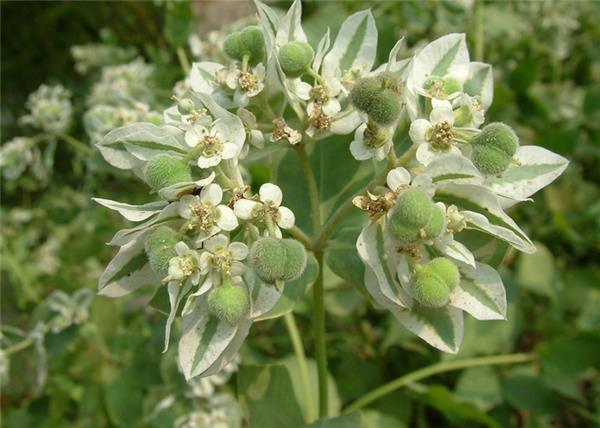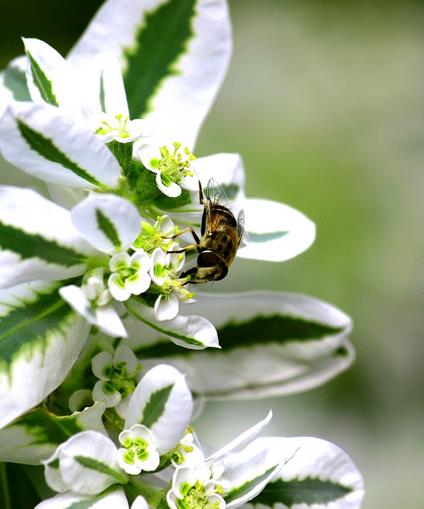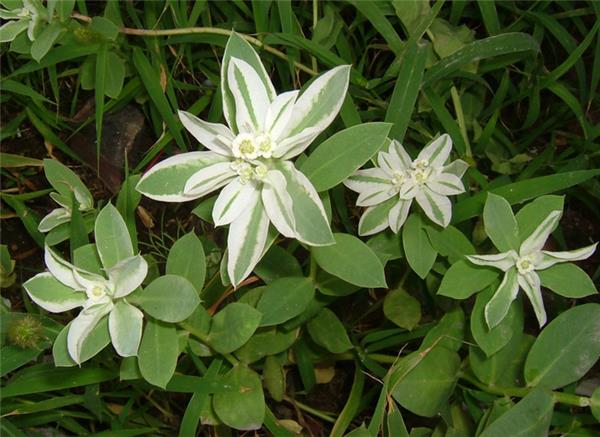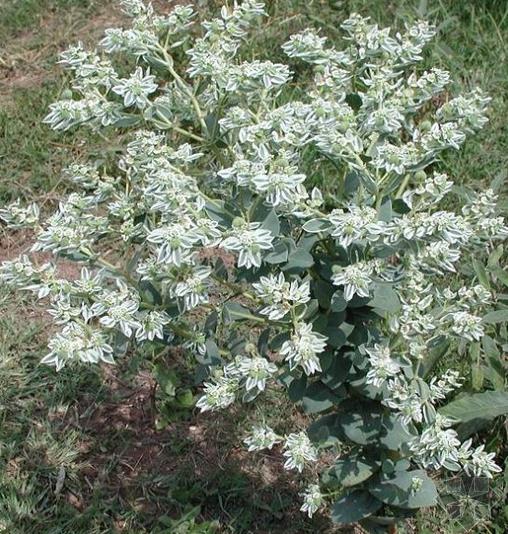Introduction and breeding skills of neighboring girl Yinbian Cui and Yinbian Cui
Silver edge green color is light and elegant, like the girl next door, its top leaves are silvery white, reflecting with the lower green leaves, especially like the snow cover of Castle Peak, in the home, if arranged with other colors of flowers, it can give full play to its color beauty. At the same time, Yinbian Cui is also a good flower bed background material and flower arrangement and leaf arrangement material. Let's have a look next.

First, the introduction of Yinbian Cui
Yinbian Cui can be planted in scenic spots, parks and gardens to arrange flower beds, flower borders, flower bushes, as well as forest edge areas and potted plants, as well as cut flower materials. The silver-edged green top leaves are silvery white, reflecting with the lower green leaves, such as the snow cover of Castle Peak, if arranged with other colors of flowers, they can give full play to the beauty of their colors. As a good background material for flower bed, it can also be used as flower arrangement and leaf arrangement.
Second, the morphological characteristics of Yinbian Cui
Annual herbs, plant height 50-70cm, stem height 60-80cm, stem erect, stem with milk, whole plant pilose. Forked branches, simple leaves alternate, ovate or oval-lanceolate, leaves whorled at the top of the stem, after autumn, the edge of the top leaf or the whole leaf turns white, like layers of snow. The cup-shaped inflorescences are borne in the axils of the upper leaves of the branches, with white petal-like appendages, small flowers, unisexual, without perianth, female flowers solitary in the center of the inflorescence, with a long stalk protruding from the ovary, flowering from June to September. The capsule is oblate, silvery white, and the seeds have tumor protuberances during the ripening period from July to October.

Third, the cultivation techniques of Yinbian Cui.
Bian Cui likes a warm, dry and sunny environment, is not cold-resistant and drought-resistant, and is suitable for growing in loose, fertile and well-drained sandy loam soil. Pot plant in the north, spring sowing in open field in central China, as a foil plant on the edge of forest and shrub in summer and autumn. Both field and potted plants must require loose, fertile soil and good drainage. Because Yinbian Cui is taproot, it should be transplanted or planted as soon as possible. The distance between plants is generally set at about 30cm. Apply sufficient basal fertilizer before planting. Watering 1-2 times after planting can be determined according to the weather conditions later, as long as the basin soil is kept moist. Topdressing liquid fertilizer for 2-3 times in the growing season. Timely drainage and waterlogging prevention after rain, so as not to cause waterlogging and death of plants caused by stagnant water in the soil. If the surrounding environmental humidity is too large, coupled with poor ventilation, it is easy to be infected with diseases and insect pests, should be timely spray prevention and control. When the plant is tall, a support should be set up to prevent lodging.

Pot or transplant: when the seedlings are installed in the pot, put a coarse-grained matrix or ceramsite 2-3 cm thick at the bottom of the basin as a filter layer, sprinkle a layer of fully mature organic fertilizer as base fertilizer with a thickness of about 1-2 cm, and then cover it with a layer of substrate, about 1-2 cm thick, and then put in the plant to separate the fertilizer from the root system and avoid burning roots. You can choose one of the following substrates for potting. Vegetable garden soil: slag = 3RU 1; or garden soil: medium coarse river sand: sawdust = 4RU 1RU 2; or one of paddy soil, pond mud, rotten leaf soil. Or peat + perlite + ceramsite = 2 + 2 + 1; vegetable garden soil + slag = 3 + 1; peat + slag + ceramsite = 2 + 2 + 1; sawdust + vermiculite + medium coarse river sand = 2 + 2 + 1. Pour water once after putting on the basin and keep it in a shady environment for a week. When transplanting the seedlings, first dig the planting hole, sprinkle a layer of organic fertilizer at the bottom of the planting hole as the base fertilizer (base fertilizer), with a thickness of about 4-6 cm, and then cover a layer of soil and put it into the seedlings to separate the fertilizer from the roots and avoid burning roots. After putting it into the seedling, backfill the soil, cover the root system, and trample the soil with your feet and water it once.

Coring: usually twice before flowering to promote the germination of more flowering branches: one to two weeks after potting, or when the seedling is 6-10 cm tall and has more than six leaves, remove the tip and retain the lower 3-4 leaves to promote branching. After the first coring for 3-5 weeks, or when the lateral branch grows to 6-8 cm long, the second coring is performed, that is, the top tip of the lateral branch is removed and the 4 leaves under the lateral branch are retained. After two coring, the plant type will be more ideal and the number of flowering will be more.
Let's take a look at the relevant knowledge of Yinbian Cui.
Related
- Wuhan Hospital Iron Tree Blooming Result Was Instantly Frightened by the Gardener Master
- Which variety of camellia is the most fragrant and best? Which one do you like best?
- What is the small blue coat, the breeding methods and matters needing attention of the succulent plant
- Dormancy time and maintenance management of succulent plants during dormancy
- Minas succulent how to raise, Minas succulent plant pictures
- What are the varieties of winter succulent plants
- How to raise succulent plants in twelve rolls? let's take a look at some experience of breeding twelve rolls.
- Attention should be paid to water control for succulent plants during dormant period (winter and summer)
- Watering experience of twelve rolls of succulent plants
- Techniques for fertilizing succulent plants. An article will let you know how to fertilize succulent plants.



